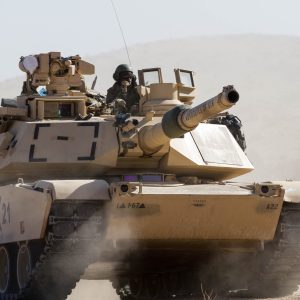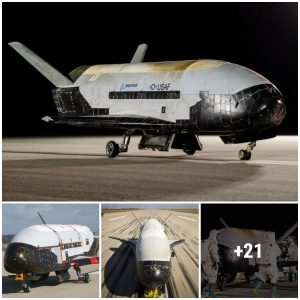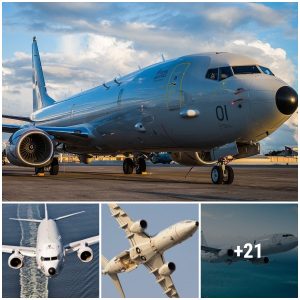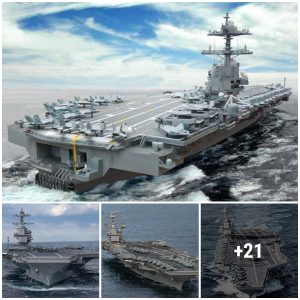Following on from the F-4E Phantom II heavyweight fighter of the third generation, its successor the F-14A Tomcat was the first fourth generation fighter jet to enter service anywhere in the world and joined the U.S. Navy in 1974.

Iranian Air Force F-14 Heavyweight Fighter
The Tomcat remains the heaviest fourth generation fighter ever to enter service – although it is still lighter than dedicated interceptors of its generation such as the MiG-25PD and MiG-31. This sheer size allowed the fighter to integrate an extremely large sensor suite with unrivalled power, and a very large weapons payload including the fastest and longest ranged American air to air missile design ever to enter service the AIM-54 Phoenix which had a 190km range a Mach 5 speed.
The Phoenix missiles were so large that no other fighter class ever deployed them, but they had the first ever ‘fire and forget’ capability for an air to air missile and were designed specifically to engage heavy bombers which could threaten American carrier strike groups such as the Soviet Tu-16 and Tu-22 bombers or the Chinese H-6 platforms. The F-14 had a higher turn rate than any other American fourth generation fighter class due to its variable swept wing design, and was equally capable at both standoff and close ranges.

F-14 Fighter on Carrier Deck
Due to its considerable cost the F-14 was only inducted into service in the U.S. Navy, despite other services showing an interest in the platform particularly for an air defence role, and restrictions on the export of the platform meant it was only ever sold to one country – the Western Bloc’s closest ally in the Middle East Iran. The Iranian Air Force would acquire 79 F-14A fighters, which continue to form the elite of its fleet until today, and have been heavily upgraded with new air to air missiles, sensors and electronic warfare systems.
Although the Tomcat, specifically the F-14D which entered service in mid-1991, is considered the most capable fighter jet of the Cold War, the fighters in the U.S. Navy saw few opportunities to demonstrate their advanced capabilities in combat – with naval aviation sidelined during the Gulf War and the Air Force performing the vast majority of sorties. It was only in Iranian service, therefore, that the F-14 was able to demonstrate its advanced capabilities in multiple high intensity air to air engagements.

AIM-54 Air to Air Missile
The F-14 was considered by far the most capable fighter in the Iran-Iraq War, which was waged between 1980 and 1988 and saw an estimated 160 Iraq fighters shot down by Iranian Tomcats with only three F-14s lost in return. The Tomcat was the only fourth generation fighter to take part in the conflict, and other than a small number of elite Iraqi MiG-25 interceptors it could very comfortably outperform all Iraqi aircraft in air to air combat. One notable incident which saw the F-14 demonstrate the advanced capabilities of its AM-54 Phoenix missiles was in the war’s first year, on January 7th 1981, when a Tomcat flying under the newly formed Iranian Revolutionary Air Force engaged Iraqi MiG-23 fighters at range.
The fighter was patrolling Iran’s oil rich Khark region, with the country’s lack of airborne early warning aircraft or modern land based air defence systems leaving the F-14 as the only reliable means of protecting its airspace. The lone F-14 was altered to the presence of a single Iraqi fighter reportedly on a strike mission against targets in Khark, and quickly climbed to high altitude, activated its AWG-9 radar and prepared to target the aircraft.

MiG-23 Swept Wing Fighter
The Iraqi fighter in question was a MiG-23 – a third generation Soviet jet which had been sold to the Iraqi Air Force in heavily downgraded form. The fighter was the fastest to take part in the Iran-Iraq War and could operate at high altitudes. While it was considered more than a match for the F-4E and F-5E fighters which formed the bulk of the Iranian fleet, its much smaller radar and relatively short engagement range of just 30km meant it was never a match for the F-14. The Tomcat detected the MiG 140km away and fired on it when it reached 90km – less than half the AIM-54 missile’s maximum range which meant the missile would have considerable excess energy upon reaching its target and be much harder to evade.
The AIM-54 was prized not only for its speed and range, but also for its high manoeuvrability, powerful radar and large payload of 61kg – over triple that of the AIM-120 missiles carried by American fighters today. The missile quickly reached its target, which it emerged had been a group of four MiG-23 jets flying in very close formation rather than a single fighter. The Iraqi fighters apparently did not take evasive manoeuvres, likely because they lacked a viable missile warning system which could detect ‘fire and forget’ missile attacks, and the explosion was sufficient to destroy three aircraft and damage a fourth. The F-14 would gain a dangerous reputation in the Iraqi Air Force, and the presence of these fighters was sufficient to deter Iraqi air units from approaching Iranian positions as it had no units capable of matching them in air to air combat.





